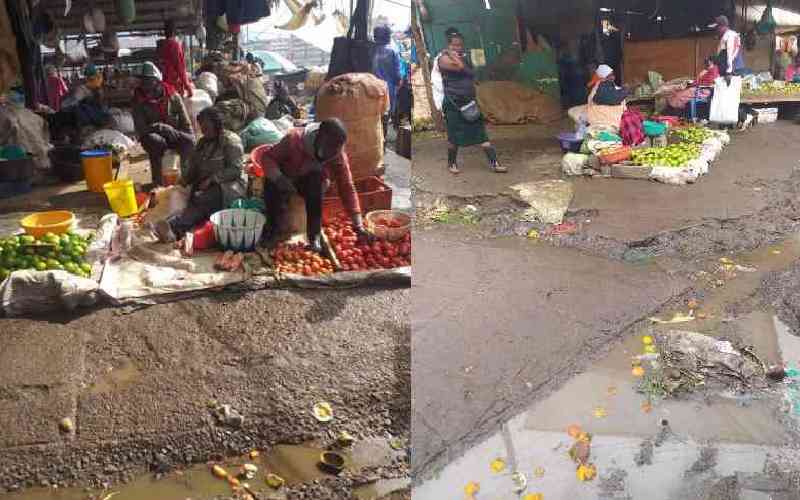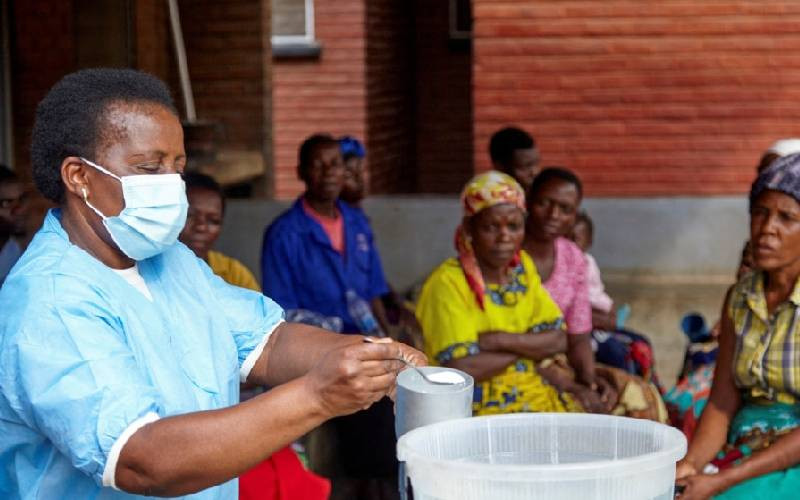The current cholera outbreaks in the Kenyan capital Nairobi and other towns are akin to those that happened in London and other towns in England; only that the latter happened over 150 years ago.
Yet the solution to cholera outbreaks in Kenya, like in London at the time, lies not with the public health practitioners, but with water and sewerage engineers in the urban areas.
The first major cholera outbreak in London occurred in 1832, killing 6,500 people. At the time, the prevailing theory was that "bad air" was responsible for the spread of cholera, with some Londoners taking to such strong-smelling compounds as camphor, sweet-smelling herbs and smoking cigars in an attempt to get rid of cholera.
It was not until the second outbreak in 1849 that killed over 14,000 people that a gentleman by the name John Snow (students of Public Health usually learn of his work in their first lectures) started arguing for an alternative theory that cholera was not spread through "bad air/smell" but through contaminated water.
At the time, the residents of London got their water from River Thames, which also served as an open sewer, with disastrous consequences for public health. This is true today for some of Nairobi's neglected neighbourhoods.
John Snow's most famous work revolves around the third cholera outbreak that occurred in London in 1854, killing over 10,500 people. Snow worked in the Soho District in London where 500 people had died from the disease within a week.
He meticulously mapped every house where someone died from cholera and interviewed surviving household members on their source of drinking water. His work pointed to a common source of water - the Broad Street pump, from where all the people who died obtained their water.
In the neighbourhood was a brewery with 535 workers. Only five people from the brewery developed cholera at the time. It turned out that the workers there loved to quench their thirst not with water, but with the malt liquor they made.
What followed was John Snow's presentation of his findings to the local council (the equivalent of our county governments) and the subsequent removal of the Broad Street pump's handle, effectively halting the cholera epidemic.
Slaying "cholera" at the time did not require medicines and fluids but access to clean water, and sanitation. In fact, it was not until 30 years later that the bacterium that causes cholera was discovered. Cholera had been defeated even without the knowledge of what caused it.
It is not any different today. There is no substitute to clean water and basic sanitation in the prevention of cholera. We may stop hawking of foods, and stock hospitals with medicines and oral fluids for rehydration of patients, but cholera will still strike again the next time there are heavy rains and flooding, and sewage effluent remains in our streets and taps.
Following the "Great Stink" at the summer of 1858 in London, where the hot weather intensified the smell of untreated human waste and industrial effluent on the banks of River Thames, a civil engineer by the name Joseph Bazalgette was contracted to design a revolutionary sewer system for London.
Work on the sewer system that measured 132 km began in 1859 and took twenty years to complete, but with it came the end of cholera outbreaks in London. Save for a few additions and repairs, these sewers are still in use today, and without which London would be unthinkable.
Our "great stink" is present in many rivers and neighbourhoods in our Kenyan cities and towns. Leaders must demand more from their water and sewerage engineers, and make the necessary decisions and investments.
Access to clean water and sanitation are essential to the realisation of all human rights, and quick fixes that focus on a few food hawkers will not be sufficient to prevent outbreaks.
Stay informed. Subscribe to our newsletter
 The Standard Group Plc is a
multi-media organization with investments in media platforms spanning newspaper
print operations, television, radio broadcasting, digital and online services. The
Standard Group is recognized as a leading multi-media house in Kenya with a key
influence in matters of national and international interest.
The Standard Group Plc is a
multi-media organization with investments in media platforms spanning newspaper
print operations, television, radio broadcasting, digital and online services. The
Standard Group is recognized as a leading multi-media house in Kenya with a key
influence in matters of national and international interest.
 The Standard Group Plc is a
multi-media organization with investments in media platforms spanning newspaper
print operations, television, radio broadcasting, digital and online services. The
Standard Group is recognized as a leading multi-media house in Kenya with a key
influence in matters of national and international interest.
The Standard Group Plc is a
multi-media organization with investments in media platforms spanning newspaper
print operations, television, radio broadcasting, digital and online services. The
Standard Group is recognized as a leading multi-media house in Kenya with a key
influence in matters of national and international interest.








